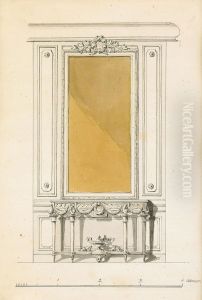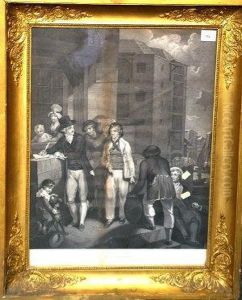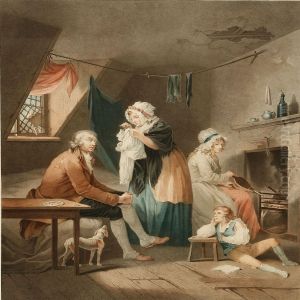Jean-Louis Darcis Paintings
Jean-Louis Darcis was a Belgian artist, born in 1749 in Verviers, which was then part of the Prince-Bishopric of Liège and is now in Belgium. Not to be confused with a chocolatier of similar name, Darcis was known for his work in the arts during the 18th century, a period that was dominated by the Rococo style in Europe, which later transitioned into Neoclassicism towards the end of the century.
Darcis' life and career were shaped by the cultural and political changes of his time. The Rococo art movement, known for its elaborate ornamentation, pastel colors, and light-hearted themes, was prevalent during the early years of his career. As the age of Enlightenment progressed, there was a shift towards a more serious and classical approach in the arts, known as Neoclassicism, which focused on simplicity, symmetry, and an adherence to the styles of ancient Greece and Rome.
Although there is limited information available about Darcis' specific contributions to the art world, it is likely that his work would have been influenced by the prominent artistic movements of the time. Artists during this period often created paintings, sculptures, and decorative arts that reflected the tastes and philosophies of the upper classes, who were their primary patrons.
Darcis lived through a period of significant historical events, including the French Revolution and the subsequent rise of Napoleon Bonaparte. These events brought about dramatic changes in Europe, including in the art world, as they shifted the focus of patronage and the themes of artistic production. The French Revolution, in particular, brought about a new emphasis on themes such as liberty, democracy, and nationalism, which were reflected in the art of the period.
Jean-Louis Darcis died in 1801, at the beginning of the 19th century—a time when Europe was still feeling the effects of the revolutionary upheavals and was on the cusp of the Romantic era in the arts. Despite the scarcity of detailed records of his life, Darcis remains a historical figure within the context of the rich and evolving art scene of his time.


